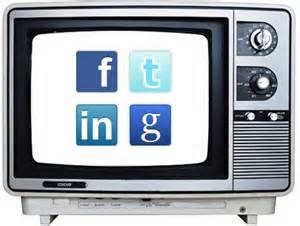 “Social TV, though still in its early stages, is evidently changing commercial broadcasting; it also has visible impact on its public counterpart”.
“Social TV, though still in its early stages, is evidently changing commercial broadcasting; it also has visible impact on its public counterpart”.
This article explores the effect of social media on public service broadcasting and specifically looks at how Television can maintain its public values and include social media at the same time. In Australia we can already see how television networks are incorporating social media into their shows. Often TV stars, reporters, guests and talk show hosts are identified using their twitter, Instagram, YouTube and Facebook accounts. A title will come up as they are introduced that links to a social media account of some sort. The viewer can follow them and get more information about who they are and what they’re reporting, commenting on or interested in. It seems a lot of television shows have to do this now to keep up with the language of the younger generation and to stay connected and involved in this area. They are now mutually exclusive media industries. Especially with Chanel 10 being the main network that claims to be TV for the younger audiences age 16-39. They are involving themselves with social media on a much higher level than other Australian Networks at the moment. Shows like ‘The Project’ are very much involved with communicating their information both through live broad casting and social media. They use audience participation and comment as a main incorporator in the discussions and feedback of the show.
This has been a great article for the research of our PB4 on Audiences. There are many other arguments within this article that we will explore in our PB4 blog.
1. J. Van Dijck and T. Poell, ‘Making Public Television Social? Public Service Broadcasting and the Challenges of Social Media’, Television & New Media, 2015, Vol.16(2), pp.148-164
